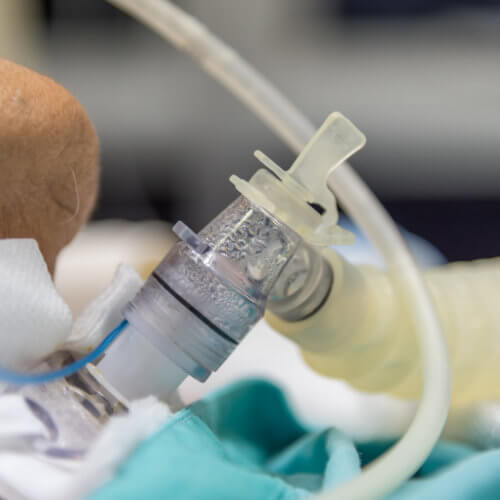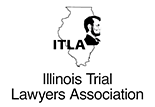
Breathing Tube Mismanagement Can Lead to Death or Serious Injury
Breathing tube mismanagement can be a risk factor for any hospital patient, but most at risk are infants and the elderly. When injuries occur due to breathing tube mismanagement, lawsuits can be filed to help the family or injured person recover compensation for the injury. This compensation can help cover past medical bills and future medical treatment.
Babies and Ventilators
Table of Contents
For infants who need assistance breathing after birth – those babies who suffered birth injuries or were premature, for example – may require breathing tubes to ensure that they are getting proper ventilation so they can not only survive but thrive.
In some cases, an oxygen mask, a CPAP machine (commonly used for sleep apnea) or a nasal cannula (small prongs inserted into the nose) that provide supplemental oxygen may be enough, but in other cases, a breathing tube may be required.
Intubation is an invasive procedure, and there are risk factors, especially for infants, since the process can be a complex one.
Infants require proper C02 and oxygen levels to prevent other serious health issues including cerebral palsy, hypoxic-ischemic encephalopathy, retinopathy (which can lead to childhood blindness), lung injuries and potential death, and intubation can elevate the risk factors for these complications.
Still, in an emergency situation such as respiratory distress, intubation ensures that the baby receives the oxygen it needs to survive, especially so if a baby is born prematurely and lungs are not fully developed.
While intubation is complicated for people of any age, for infants the process is especially complex, and either too much or too little oxygen or too much or too little carbon dioxide can cause permanent brain damage or death.
Breathing Tube Problems Leading to Lawsuits
Some potential problems associated with breathing tube mismanagement include:
- If too much air is administered or there is too much pressure in the baby’s lungs, the alveoli may rupture, causing holes in the lungs that allow air to leak into the area around the lungs, preventing the lungs from expanding and potentially compressing the arteries to the heart, so not enough blood reaches the brain, leading to hypoxia, a form of brain damage caused by reduced levels or oxygen.
- Hypocarbia is caused when a ventilator provides too much CO2, which in a span of just a few hours can cause permanent brain damage due to a lack of oxygen to the brain. The brain damage associated with hypocarbia is periventricular leukomalacia, which is damage to the white matter, which houses the neurotransmitters than send messages from the brain to the rest of the body. If an infant is properly monitored, hypocarbia is easy to correct.
- Most common in premature babies, apnea can lead to respiratory distress syndrome, which occurs when the baby’s lungs aren’t fully developed.
- Bronchopulmonary dysplasia. This chronic lung disease is most common in infants who have spent long periods of time – more than four weeks – receiving supplemental oxygen. It impacts about 10,000 babies a year, according to WebMD.com, and can slow growth and cause problems with other developing organs including the heart.
- Hypoxia can lead to permanent brain damage or death, because not enough oxygen reaches the baby’s brain.
- Respiratory acidosis is the result of high levels of CO2 that cause Ph imbalances in the blood, and can lead to delayed growth, kidney problems or bone density problems. Severe cases can be deadly, and high levels of CO2 can also lead to brain damage.
Medical professionals can make mistakes, and personal injuries and wrongful death can happen. Having an attorney can help you get the maximum settlement for your case. If your breathing tube case cannot be settled pre-trial, a lawsuit can be filed for recovery. Suing a doctor or medical team can be costly and difficult.
Finding the right breathing tube lawyer can be the best step you can take to ensure you receive a recovery.
Breathing Tubes Malpractice and the Elderly
Infants are not the only ones at risk when a breathing tube is used.
The elderly, especially those in nursing homes, are especially vulnerable.
For them, there are a variety of different complications associated with the use of a breathing tube, especially if the aparatus is contaminated with bacteria when it is put into place.
Risk factors include:
- In the elderly, pneumonia, an infection that causes the air sacks of the longs to fill with fluid, can be a potentially deadly infection.
- The elderly are also at risk of pneumothorax, which occurs when the pressure of the ventilator causes holes in the lungs, causing air to leak out into the chest cavity. Pneumothorax can also be caused when a breathing tube is inserted improperly.
- Oxygen deprivation. Breathing tube complications can prevent oxygen from reaching the lungs, resulting in brain damage or death.
- Lung damage. Like pneumothorax, if too much pressure is administered into the lungs by the ventilator, permanent lung damage can occur.
Other problems associated with a breathing tube can include blood clots, bed sores, damage to the vocal chords and oxygen toxicity, which occurs when too much oxygen is administered into the lungs.
Because the elderly are already facing medical issues that led to the need for breathing tube ventilation, problems can be especially complicated.
When Are Breathing Tube Errors Considered Medical Malpractice?
If a loved one was injured by improper insertion of a breathing tube or died while being treated with a breathing tube while in a nursing home or hospital setting, both facilities can be held liable due to the constant monitoring required of those being treated with a breathing tube.
Facilities would be found liable if equipment wasn’t properly inspected, if a breathing tube wasn’t working properly and if a patient was not properly monitored while a breathing tube was in place.
According to experts, breathing tubes are usually in place for up to two weeks, except in special circumstances, and blood gases should be checked every three to four hours to ensure that there are no complications.
If your infant or loved one suffered brain damage or died as a result of breathing tube complications and you suspect medical malpractice played a role, seeking legal guidance will be one of the most important steps you take.
Please contact our law offices today, and our experienced attorney and team can help guide you through the complex legal landscape that is medical malpractice.
We will approach your case with the care and compassion you deserve, and you won’t be charged until we win your case in court.
“A real class act with your best interest at heart!”
![]()
“Working with David was a pleasure. From the first time I spoke to him I felt at ease with him as he seemed more concerned with my well-being before all. He was always keeping me updated on everything every step through the process and was always available for me if I had a question. David delivered more than expected for me in every way and I would recommend him to anyone. A real class act with your best interest at heart!”
Frank T.











